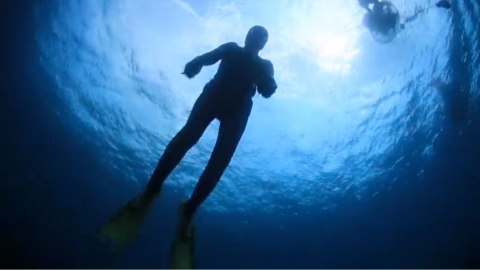all these years later we are still
tallying up the damage from
superstorm sandy and a new estimate
finds that
billions of dollars in damage from that
storm
can be tied to rising sea levels caused
by
carbon emissions as part of our ongoing
series on the human stories of climate
change
peril and promise senior correspondent
david cruz
looks at the price we paid it's been
almost
10 years but we're still learning things
from superstorm
sandy a new report out today suggests
that
what made sandy super was not simply the
confluence of
forces of nature but significantly
our impact on the forces of nature the
report
prepared by researchers from climate
central based in princeton
stevens institute and rutgers university
estimates
sea level rise of four inches between
1900 and 2012
specifically caused by us how much
additional damage did that cost
um it was on the order of about uh 12
percent of the overall damage in around
70 000 people
who would not have been exposed or not
been damaged
had it not been for those four inches
caused by humans for
the last uh you know 200 years we've
been burning fossil fuels
and putting carbon dioxide in the
atmosphere we've also been
chopping down forests and changing land
use in a way that puts co2 in the
atmosphere we've also been putting
things like methane in the atmosphere
and so all of those changes to the
atmosphere
lead to more heat being trapped which
warms the planet which warms the oceans
and well you get it right
the findings had environmentalists
saying both i told you so and
let's get going on solutions the
report's findings are clear
that if you were to check the planet
into the doctor's office
they would say you're about to have a
heart attack and
you know the reports findings are really
unique because they are directly
attributing
a disaster we all know all too well from
hurricane sandy
and showing that a significant
percentage of
sandy's impacts was because of man-made
climate change
that is unique that has not been
quantified before on the low end almost
13 of the damage on the high end maybe
24
of the damage monetary damage on the low
end
more than three and a half billion
dollars on the high end
could have been as much as seven billion
dollars directly attributable
to the myriad of ways we are warming the
earth
i think the biggest takeaway is that
this report shows how vulnerable
we are and in some ways we were lucky it
could have been worse but what did show
is that for the first time the storm
really
went into places that in other other
times and other storms
probably would not have been hit so bad
or hit at all the report doesn't make
specific recommendations on how to get
out of this spiral
but it's we have met the enemy and he is
us theme
is not falling on deaf ears with the
people who might actually be able to do
something about it we're all in big
trouble we're in big
big trouble and smith is usually the
optimist
the senator who chairs the environment
committee says legislators and the
governor's office
are trying to do something half of the
greenhouse
gases that go into the air come from the
transportation sec
section section of our economy so
electrify everything let's have ev's for
all of our citizens let's have electric
uh
tractor trailer trucks for the movement
of our goods
electric trains that's one of the things
that we do the second thing that we have
to do
we have to get off our addiction
to fossil fuels big time
smith calls the state's electric vehicle
incentive program which provides rebates
to those who buy evs and
set up charging stations at home a good
start
the state has also gone all in on
offshore wind
with the governor setting a goal of 100
renewable energy in jersey
by 2050 roughly a generation away
that's optimism that so far we have been
unable to refine into action
i'm david cruz nj spotlight news
lead funding for peril and promise is
provided by
dr p roy vagalos and diana t vagalos
major support is provided by the mark
haas foundation
and sue and edgar wachenheim iii and the
cheryl and philip milstein family



